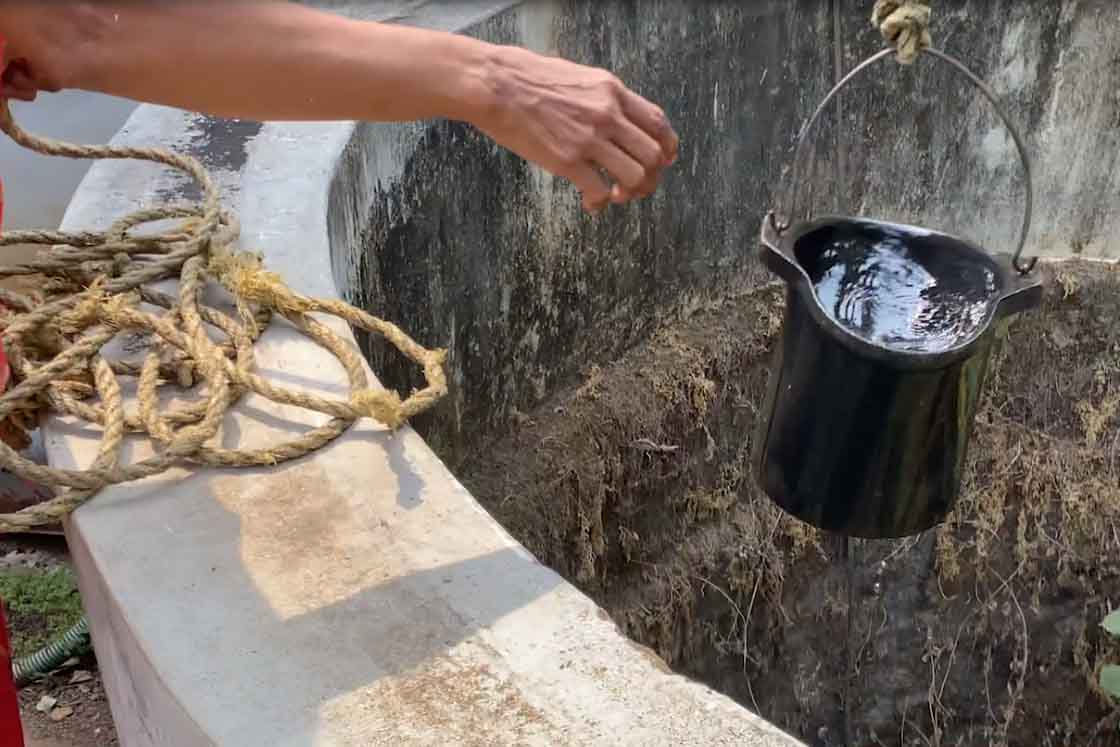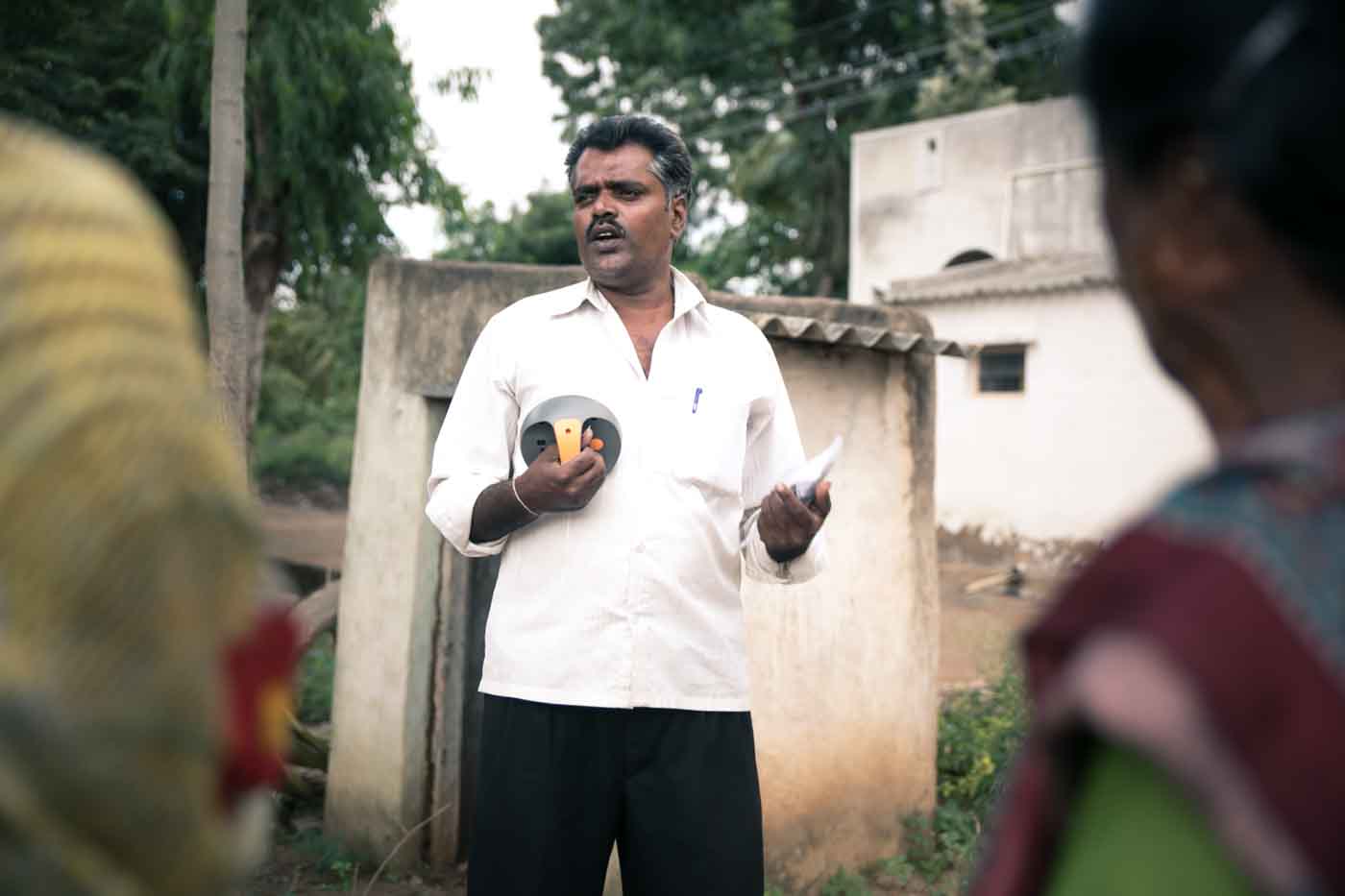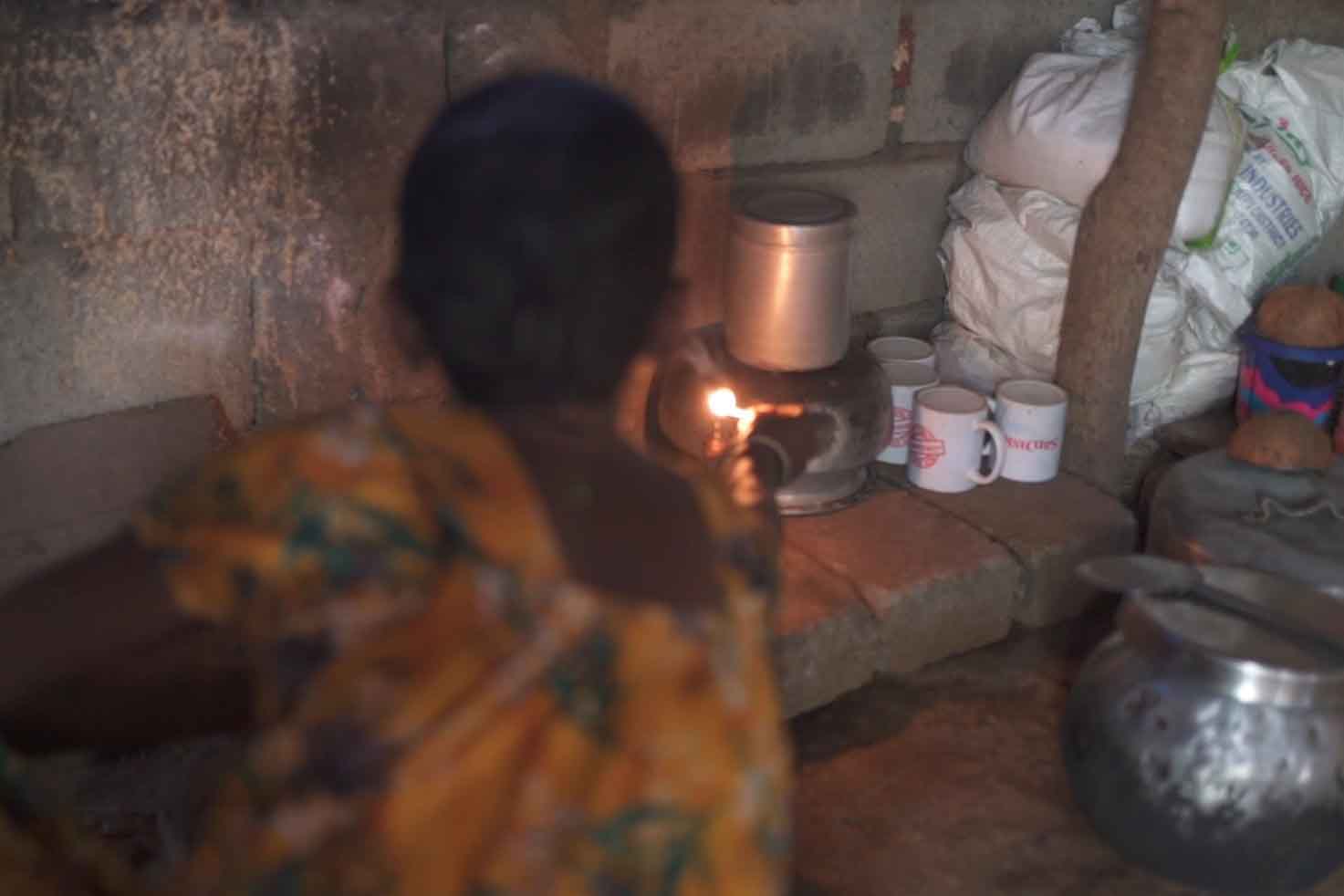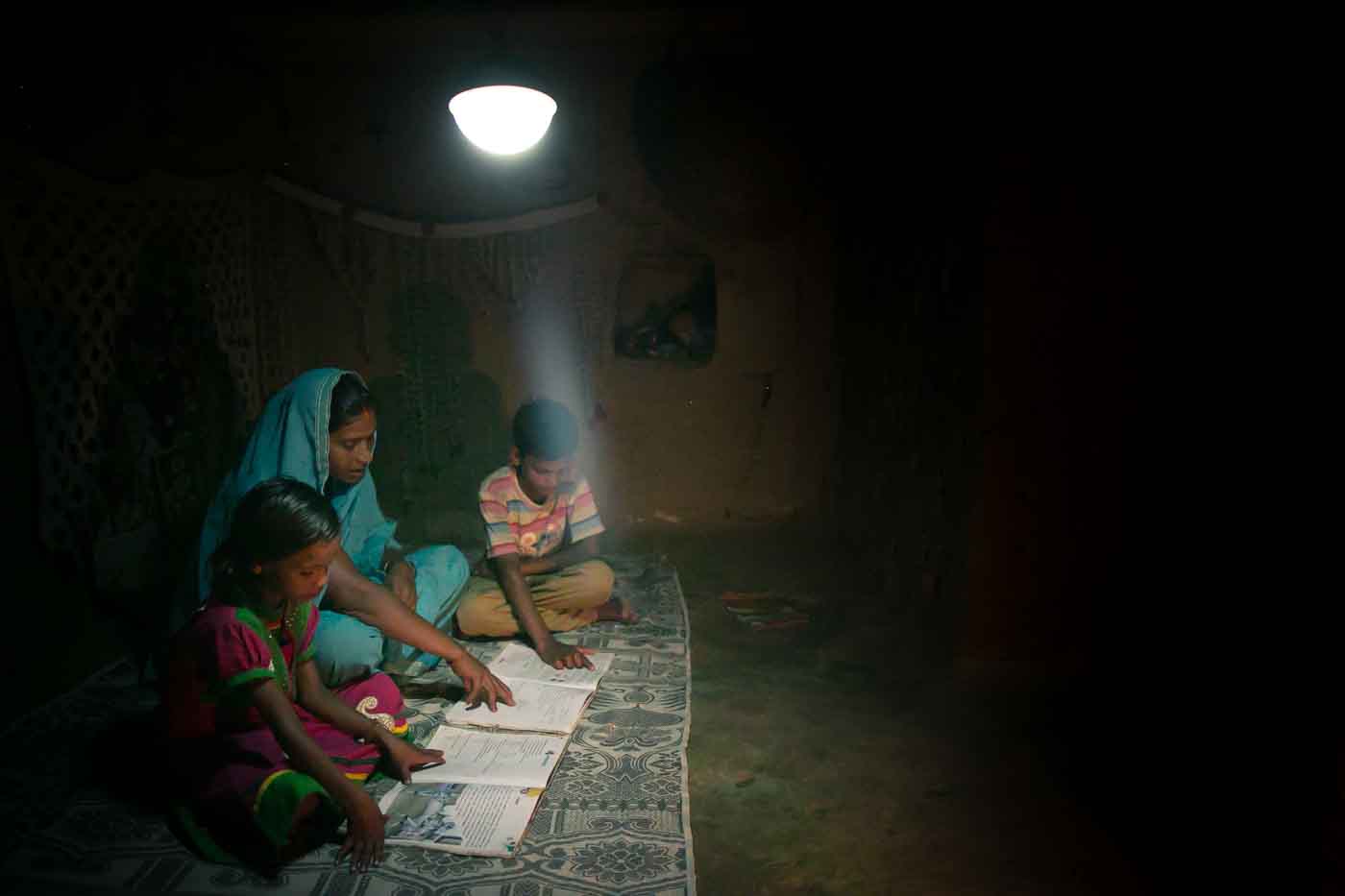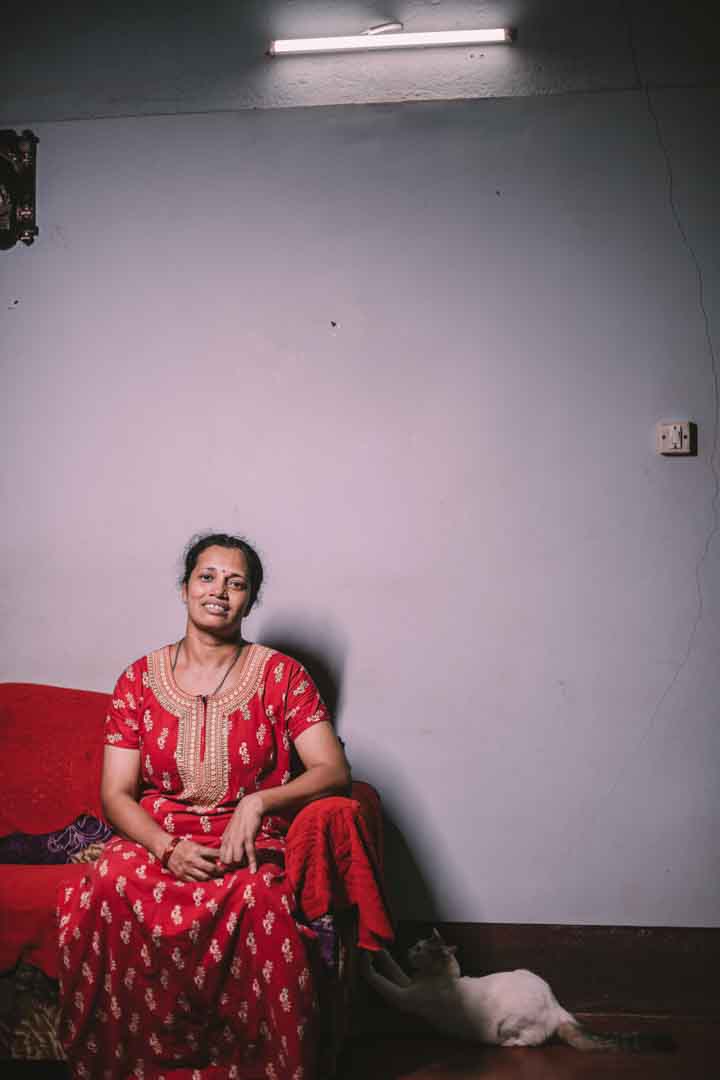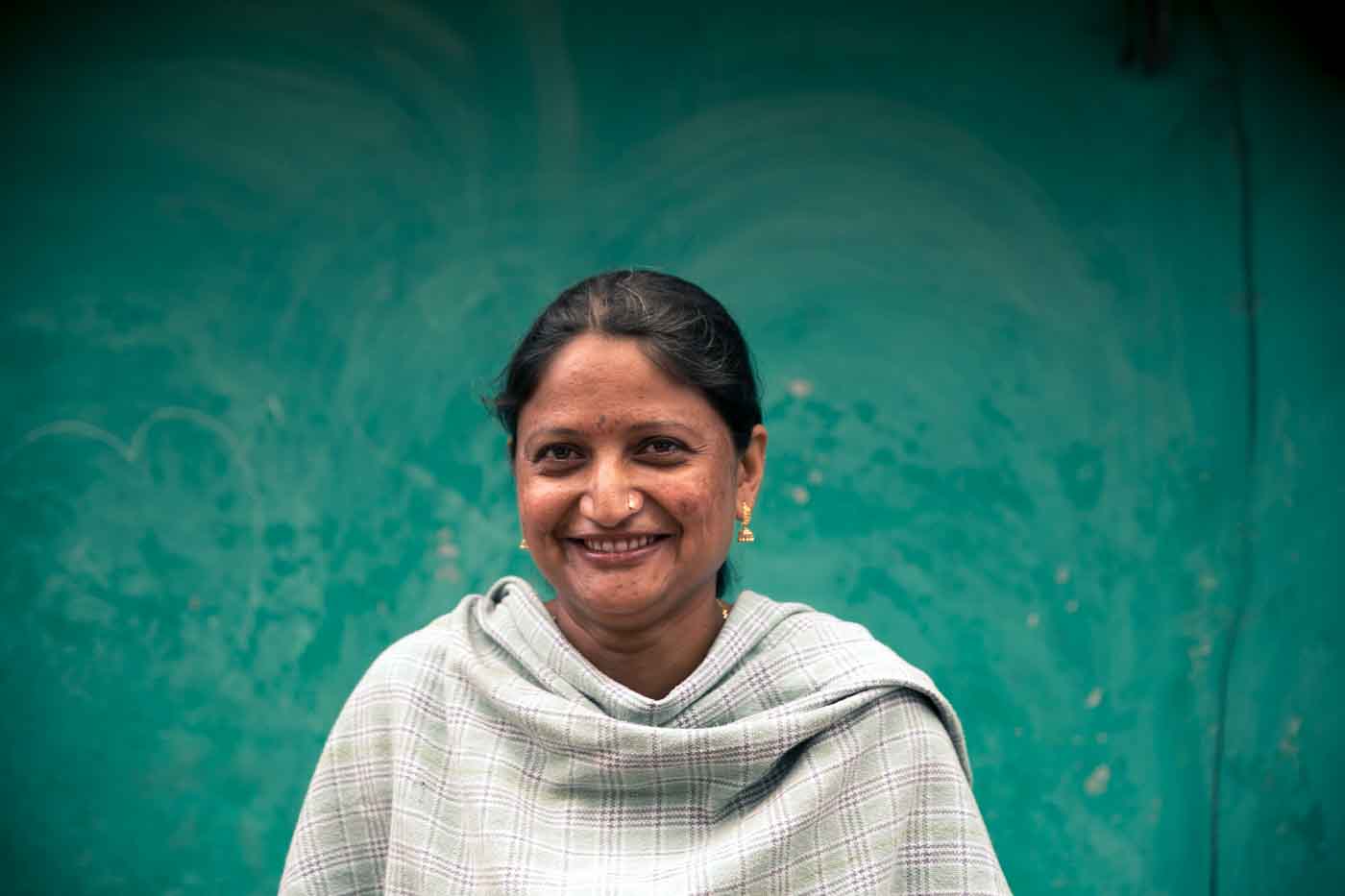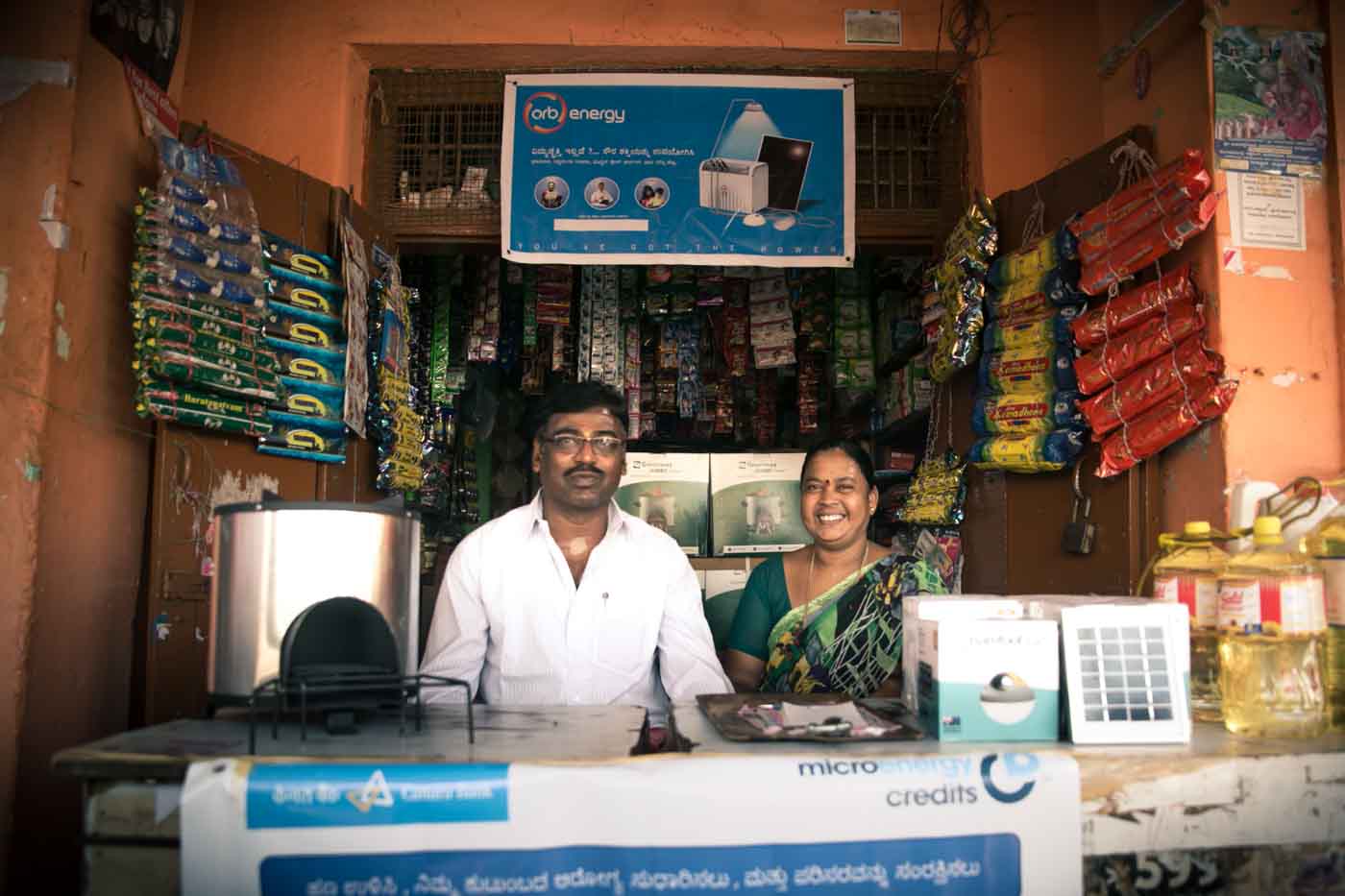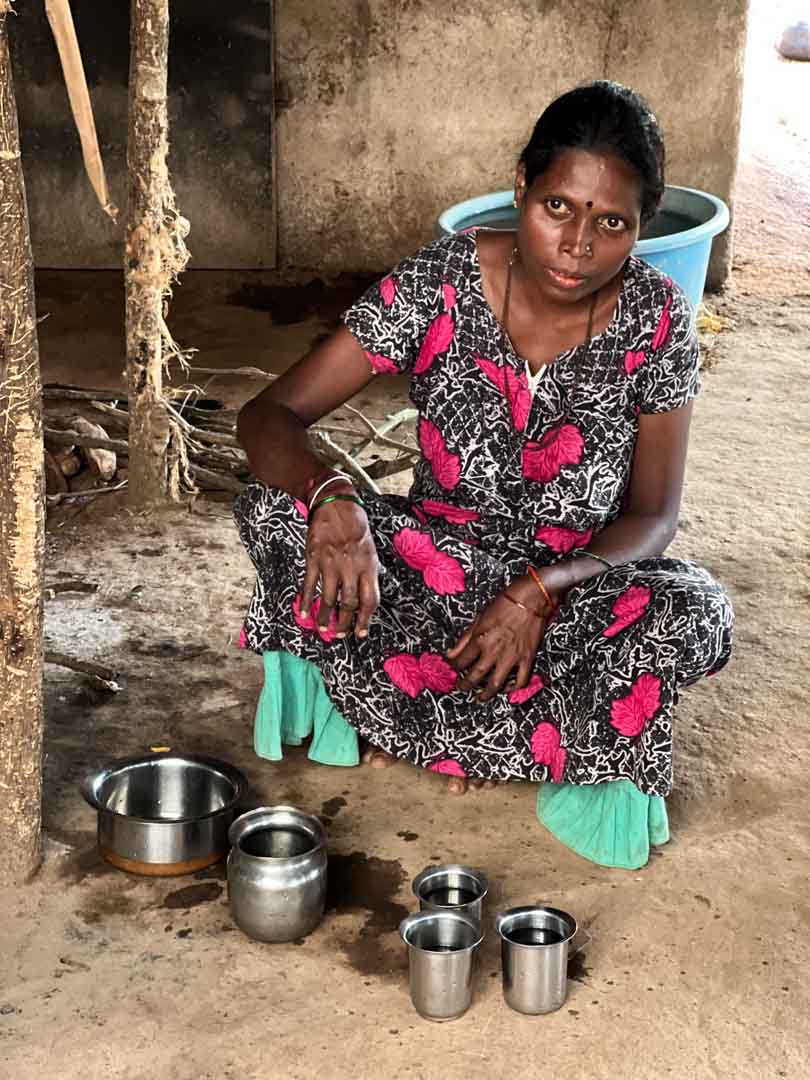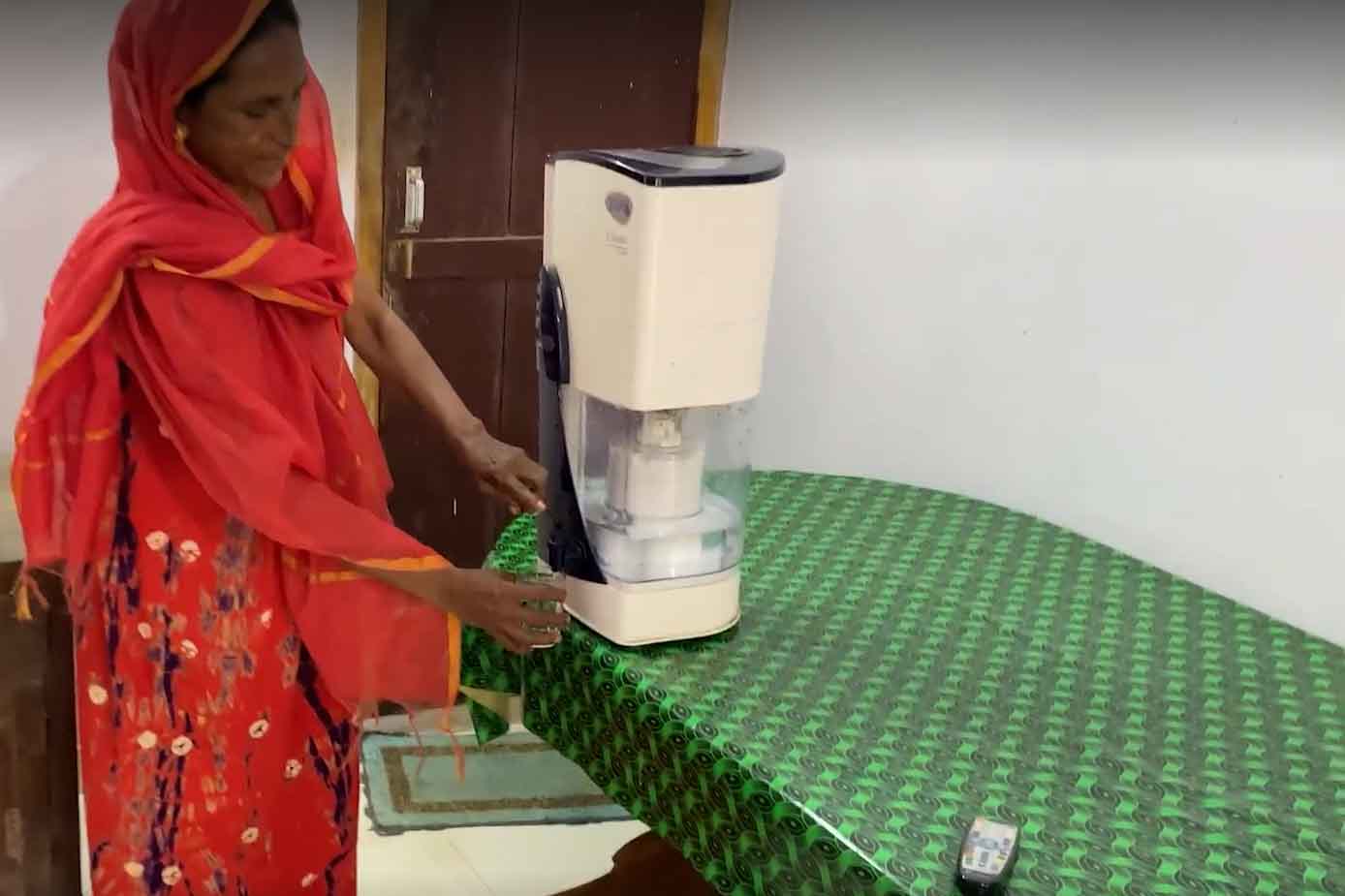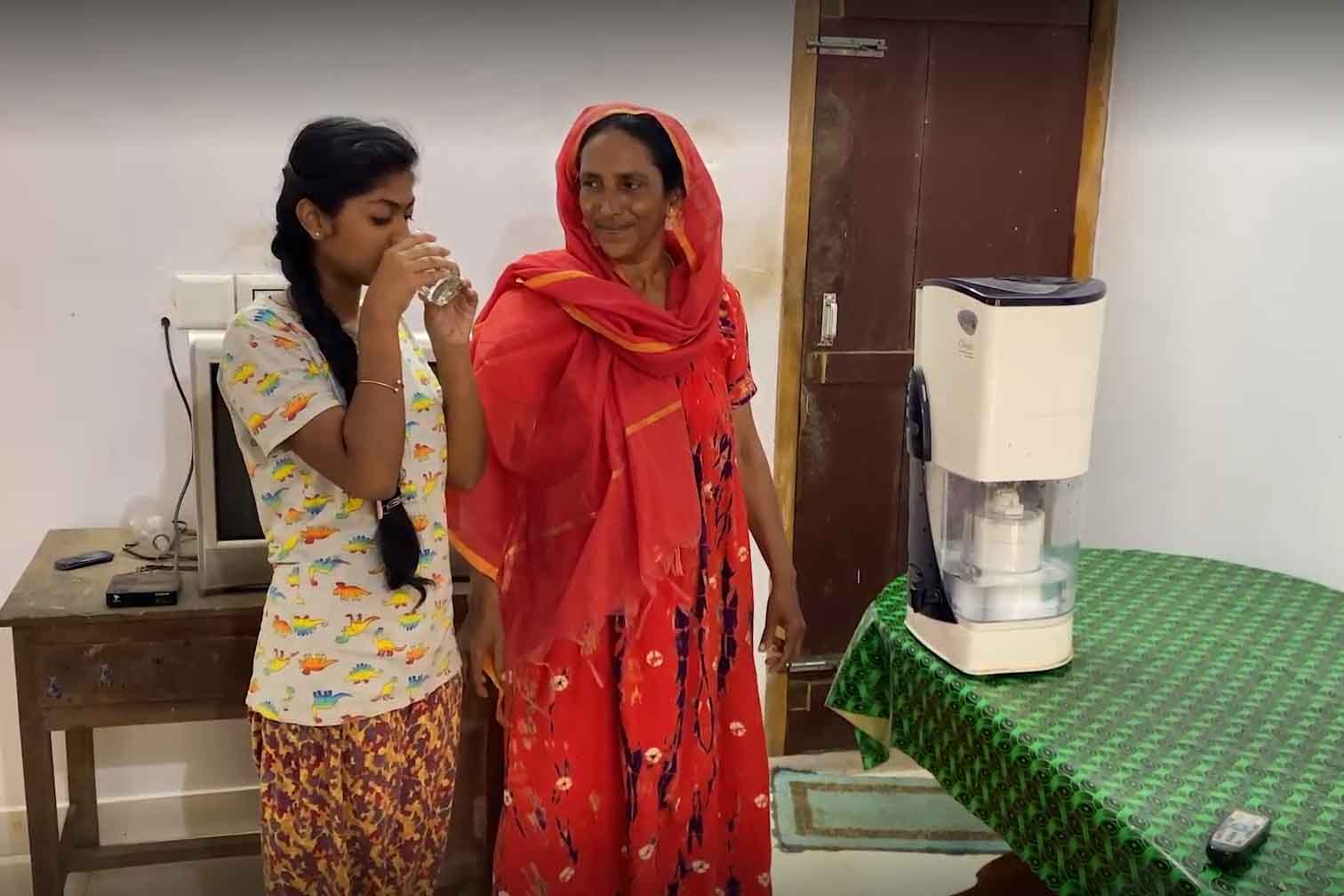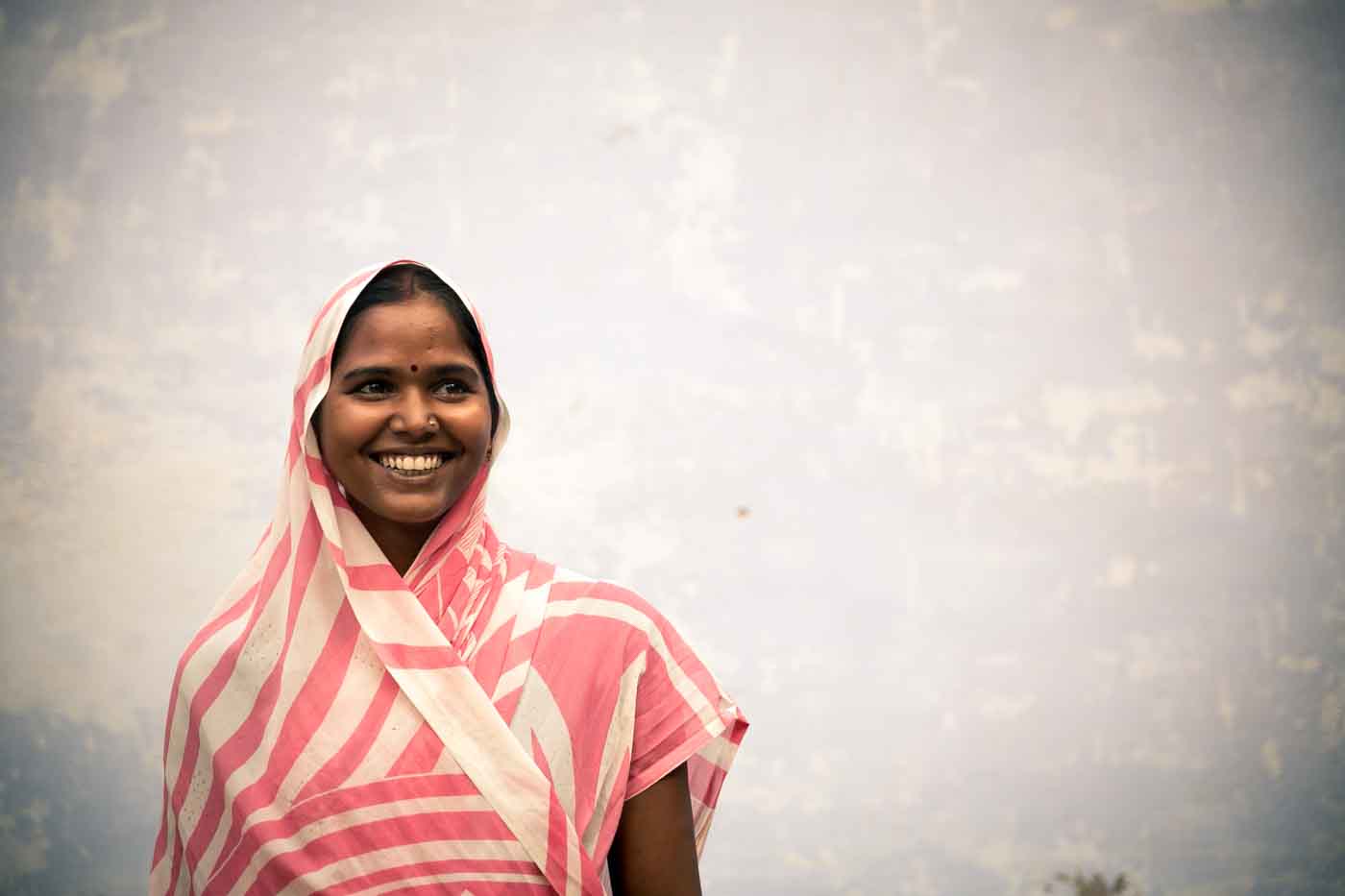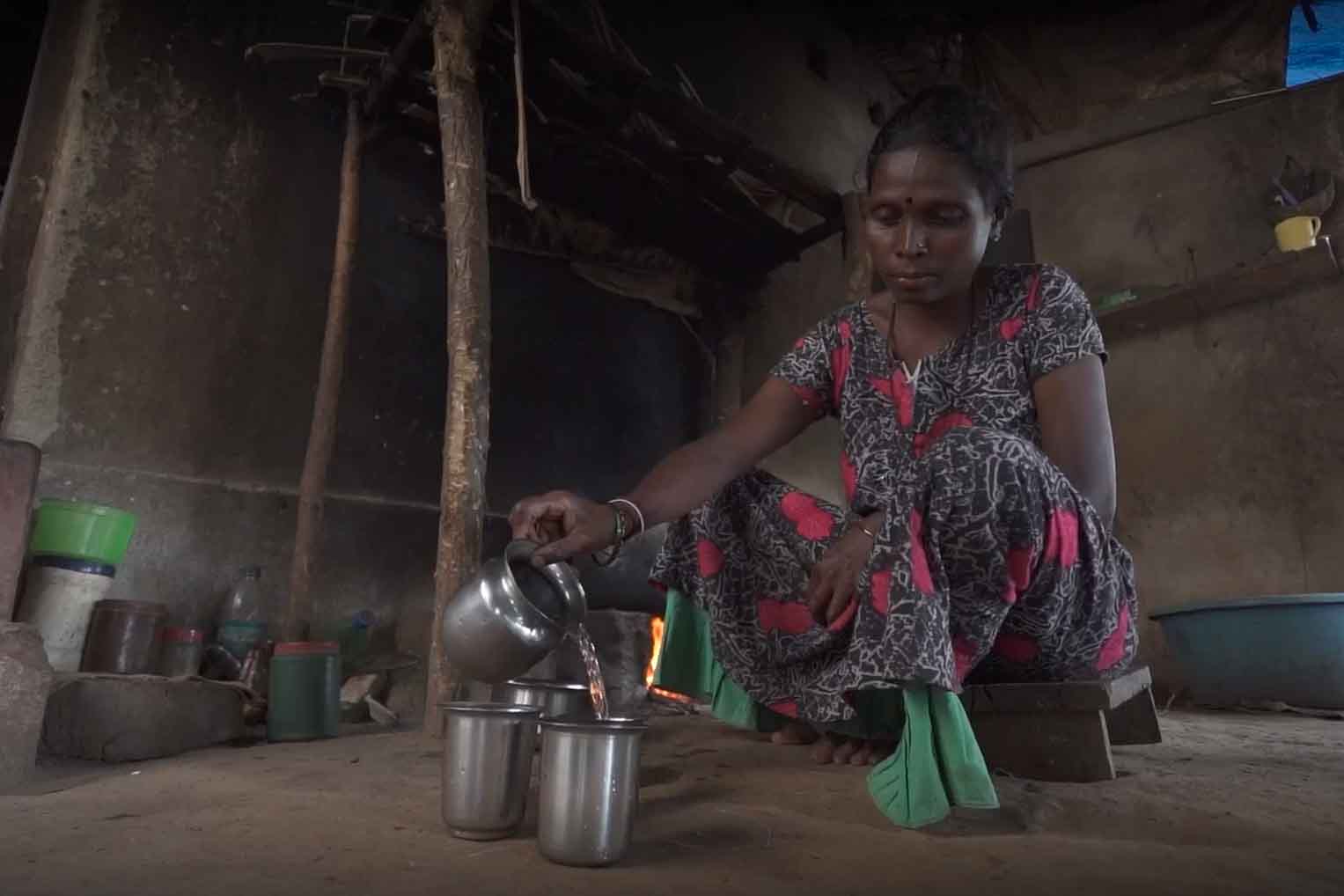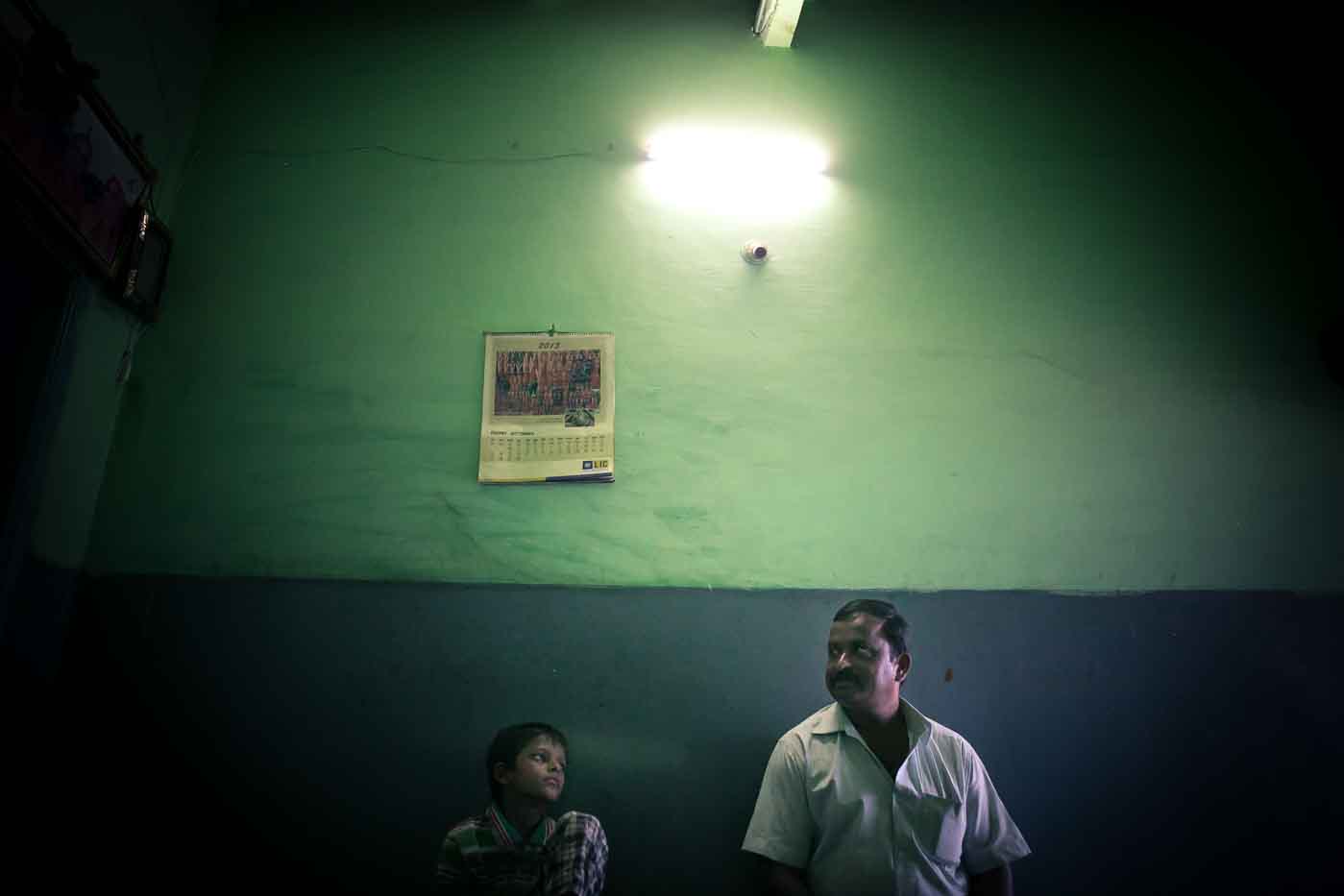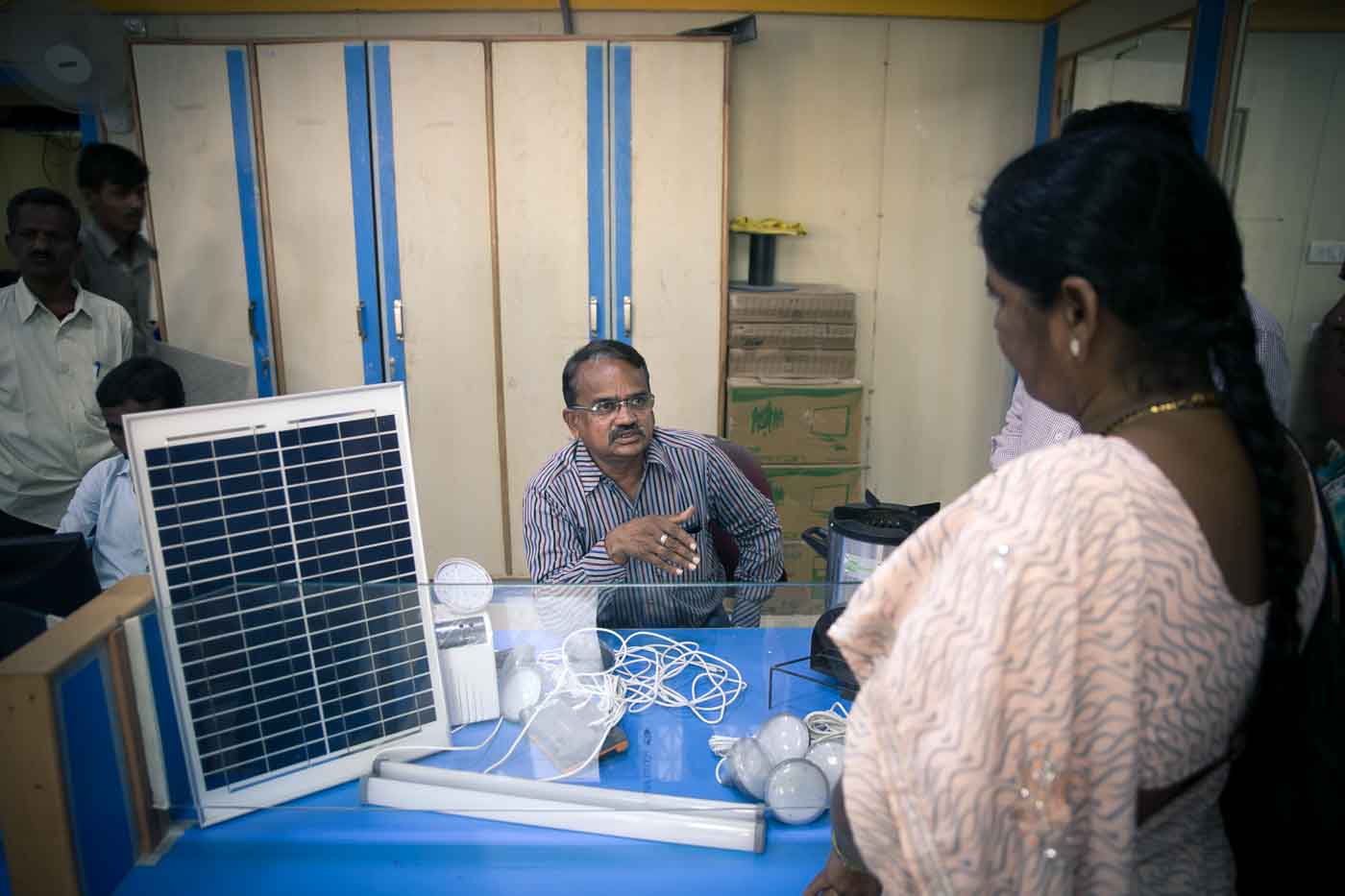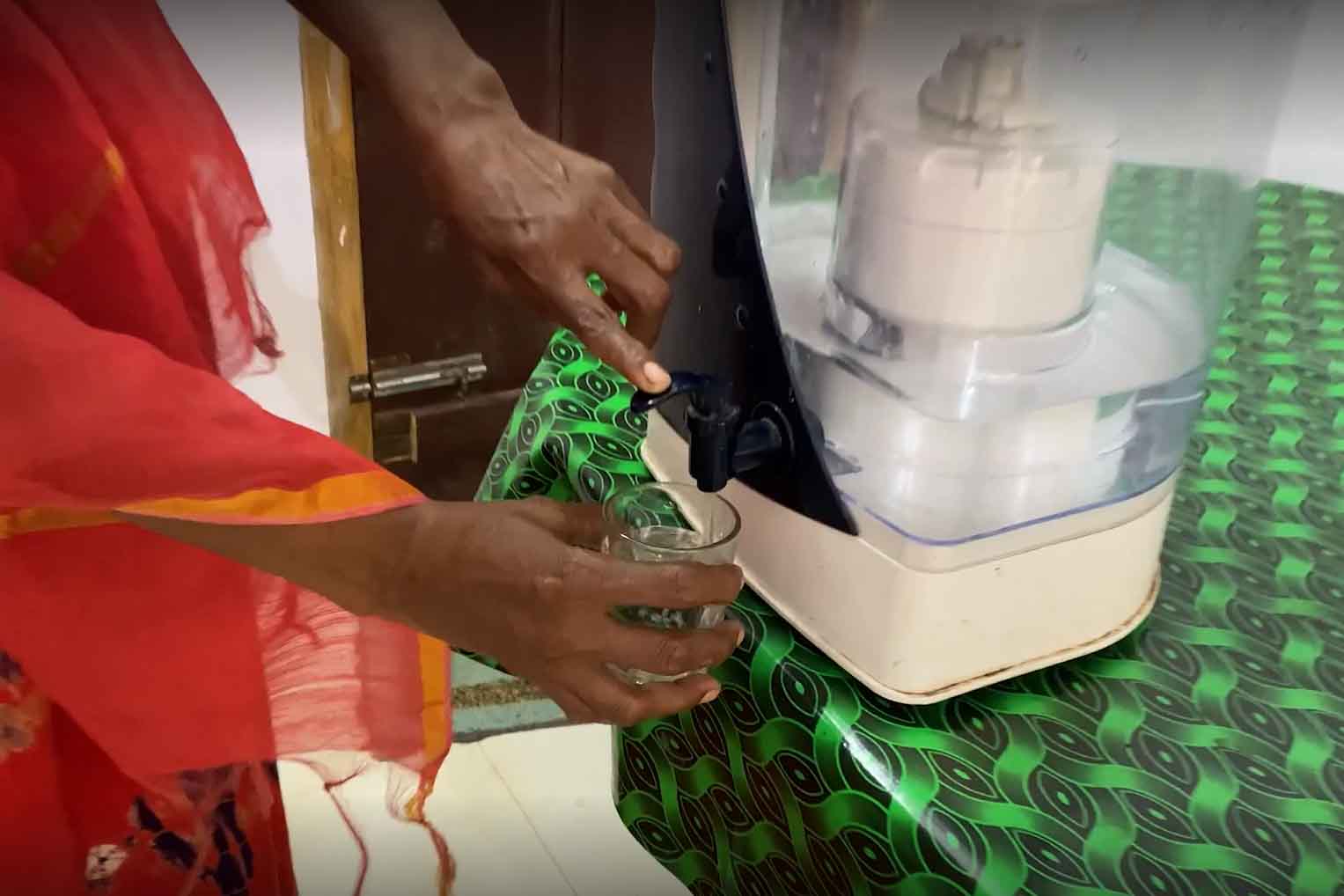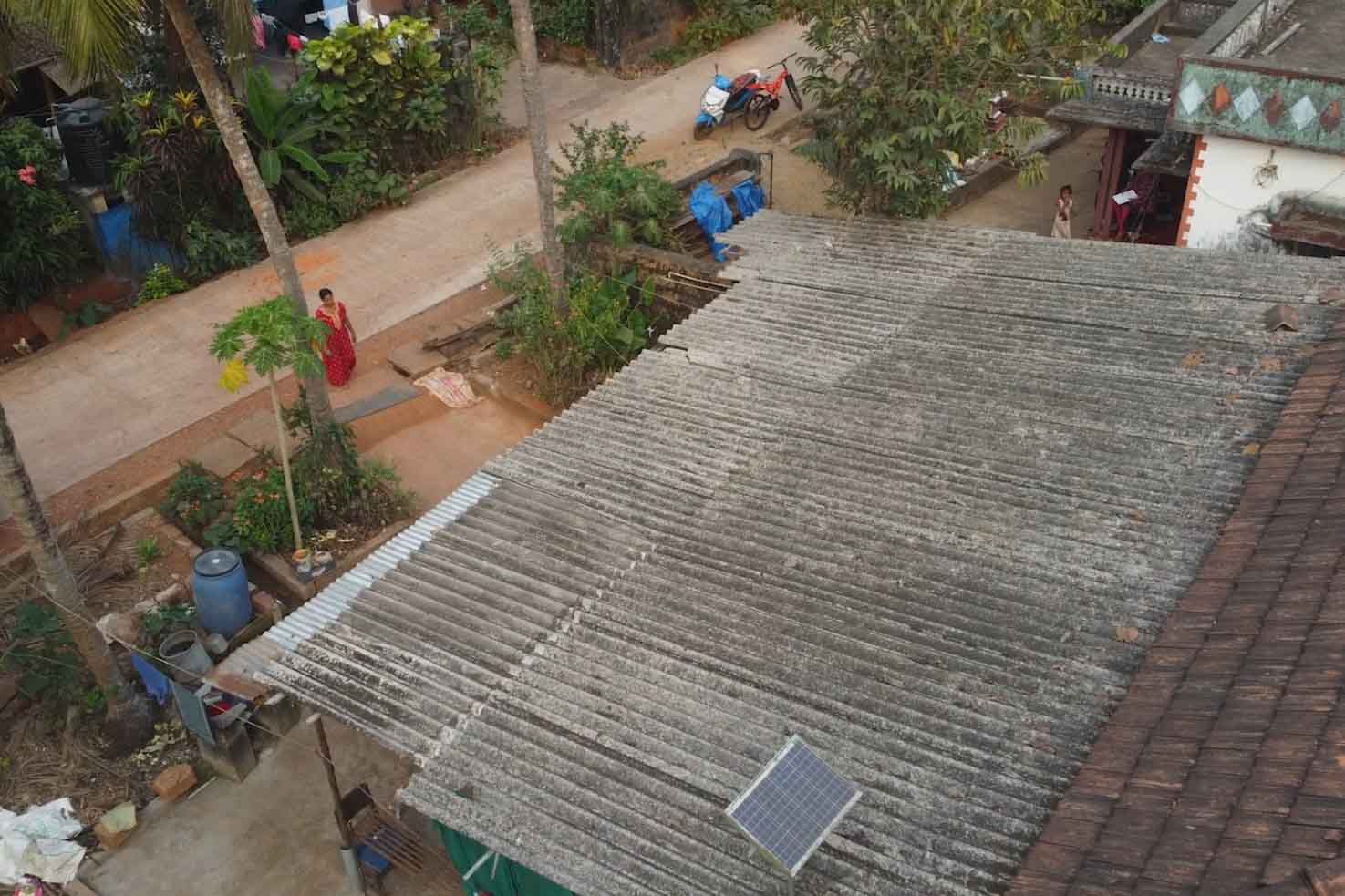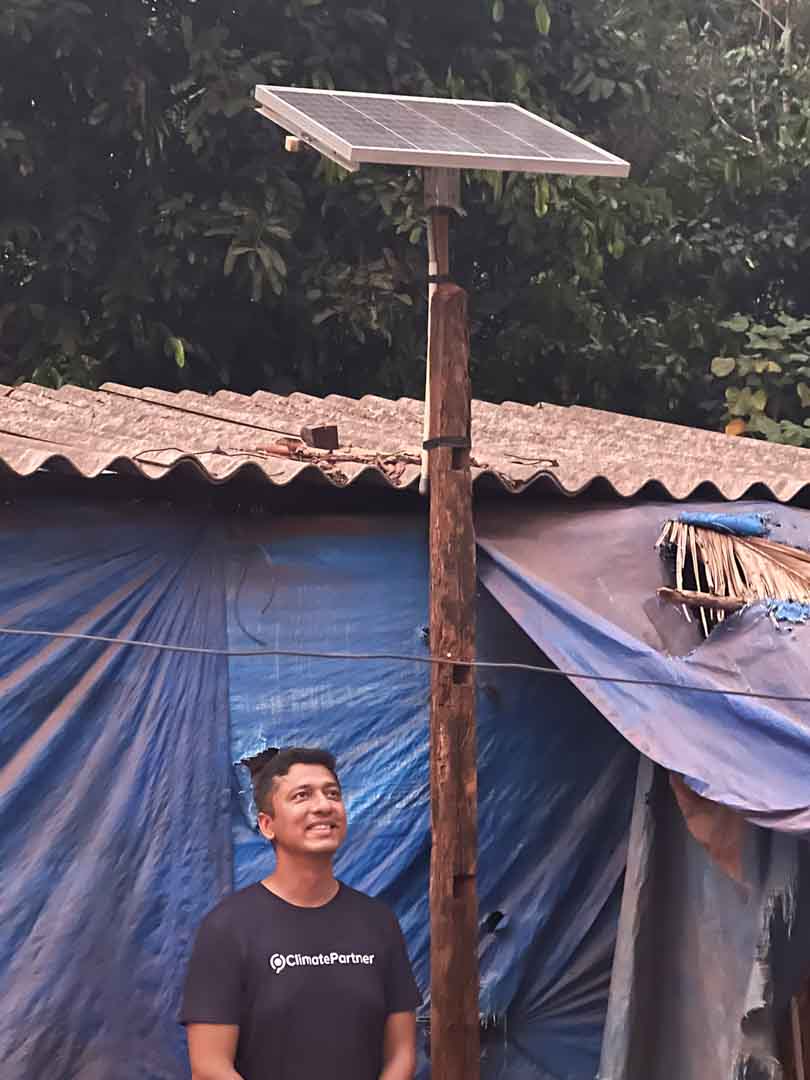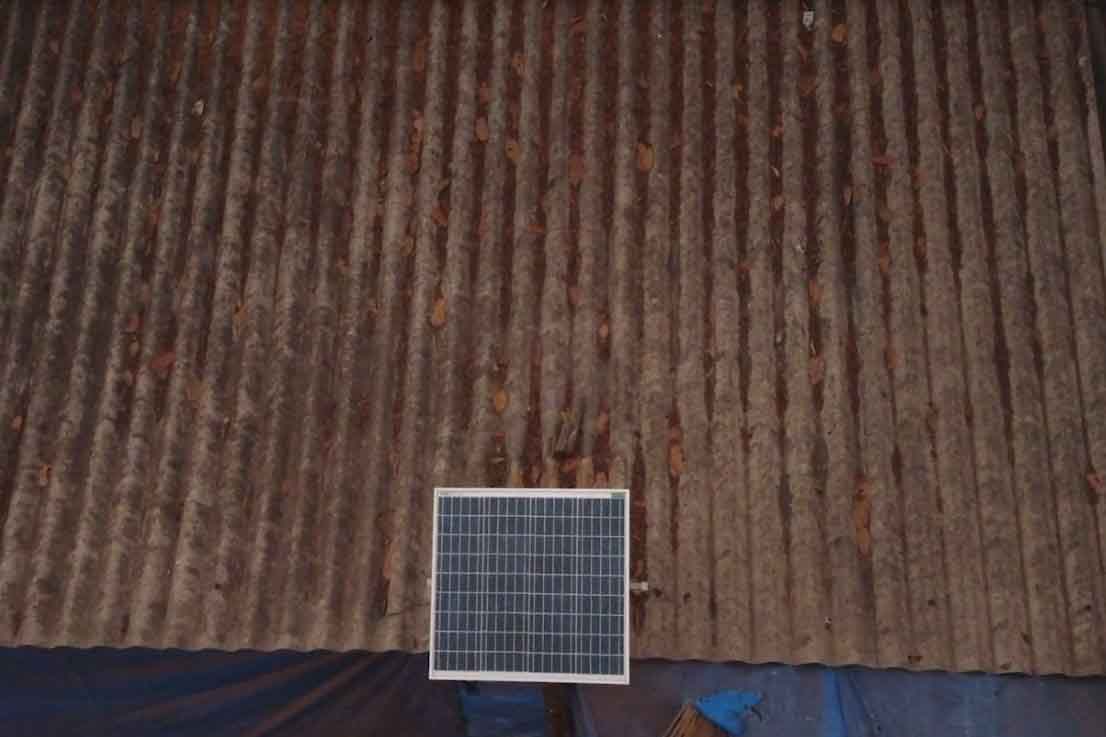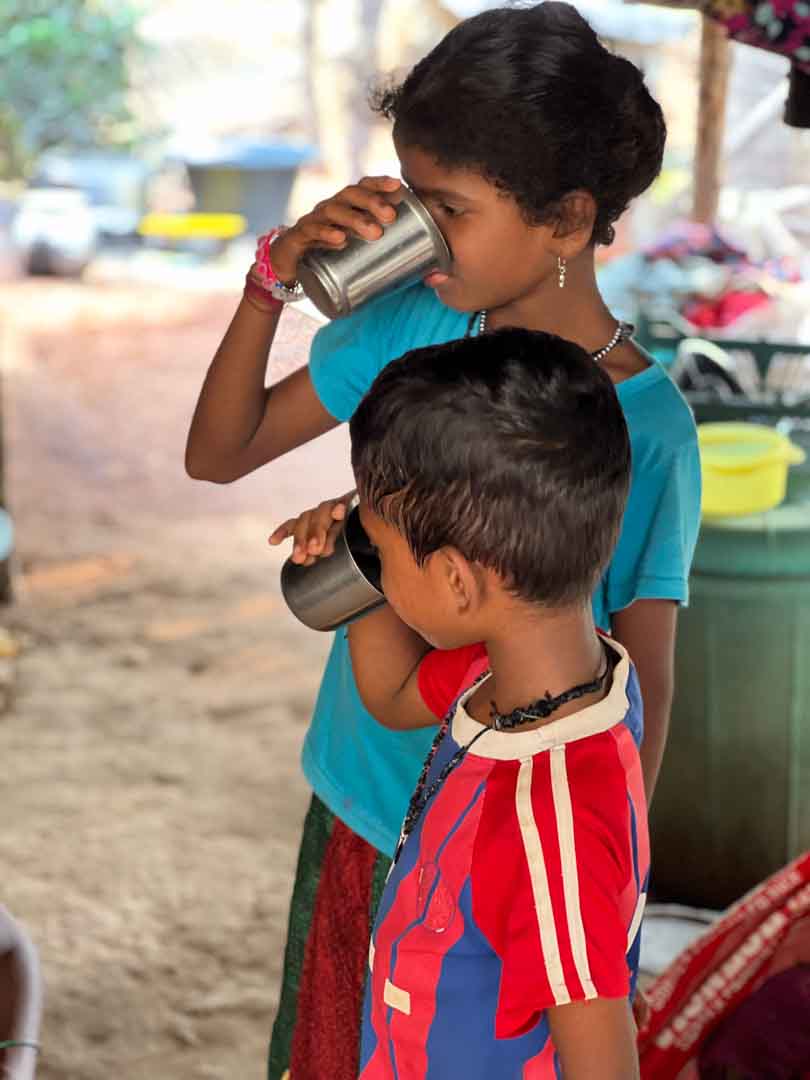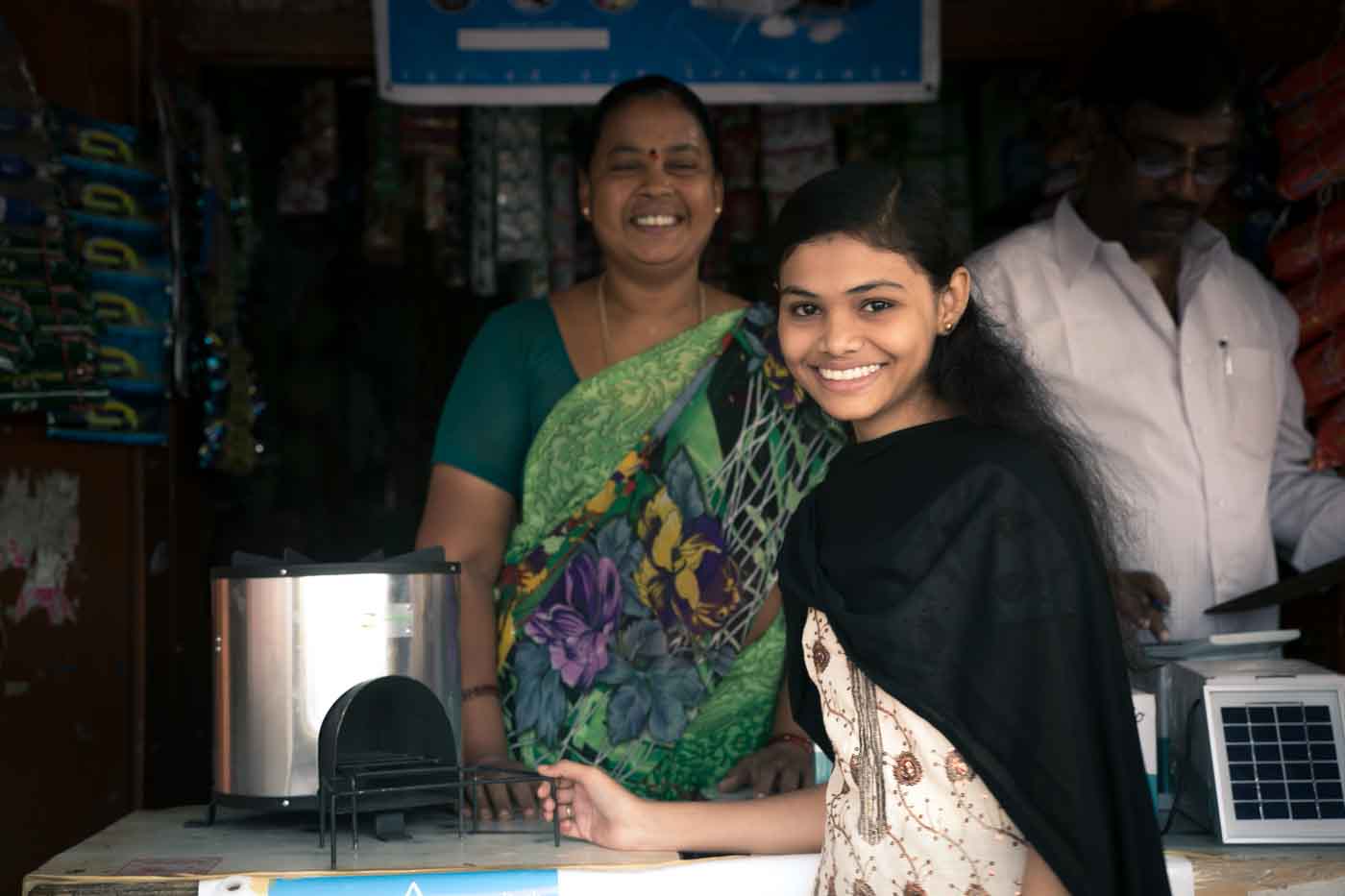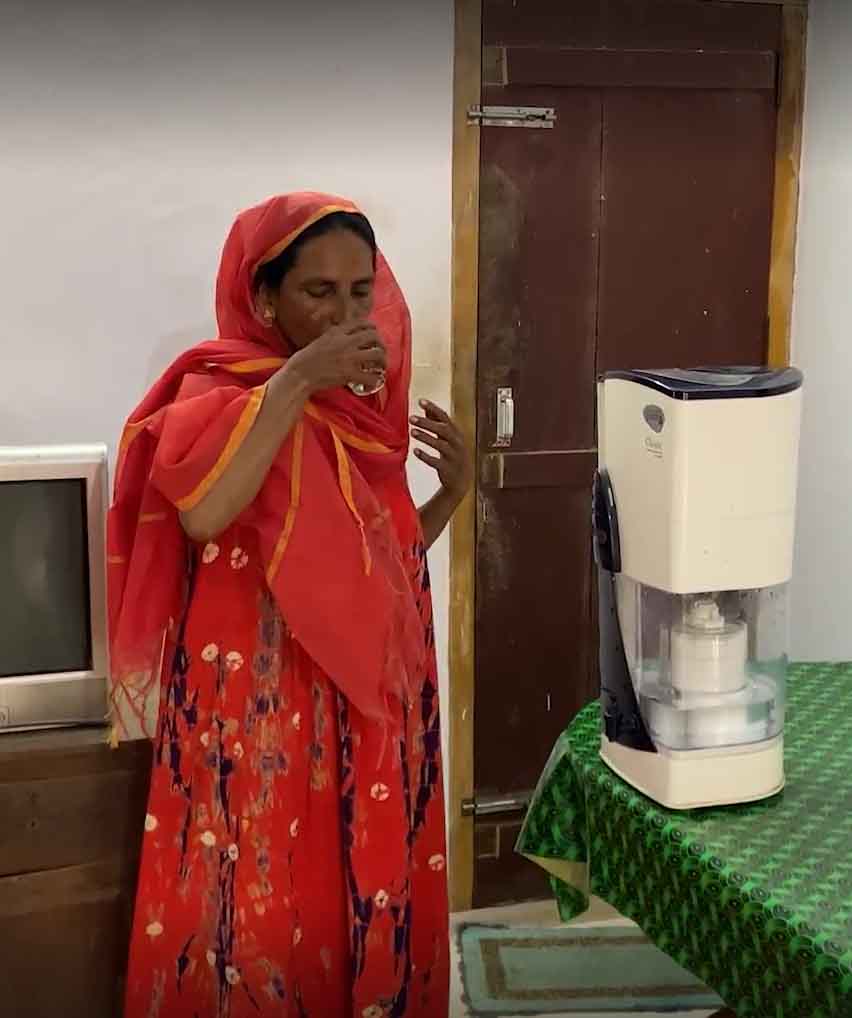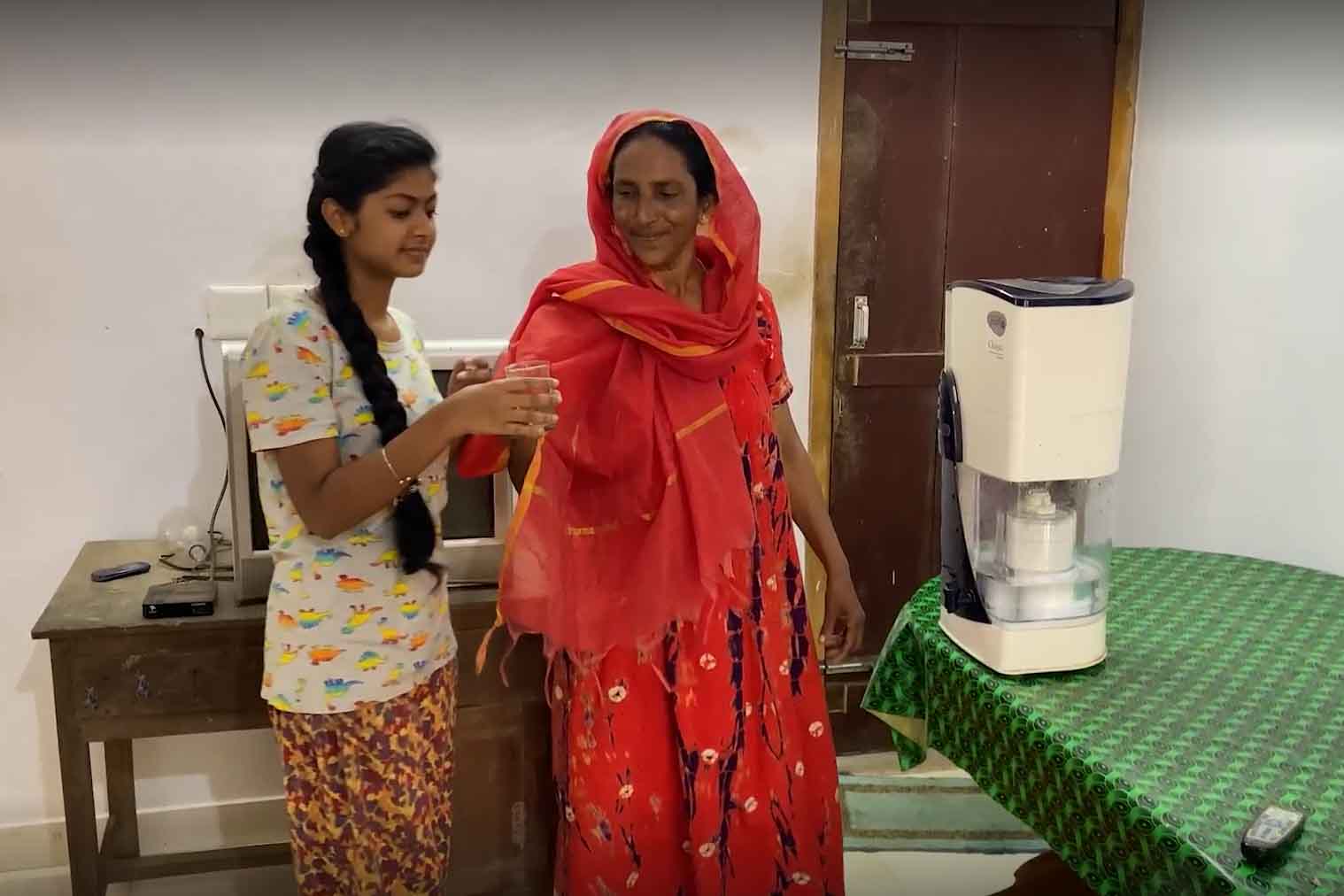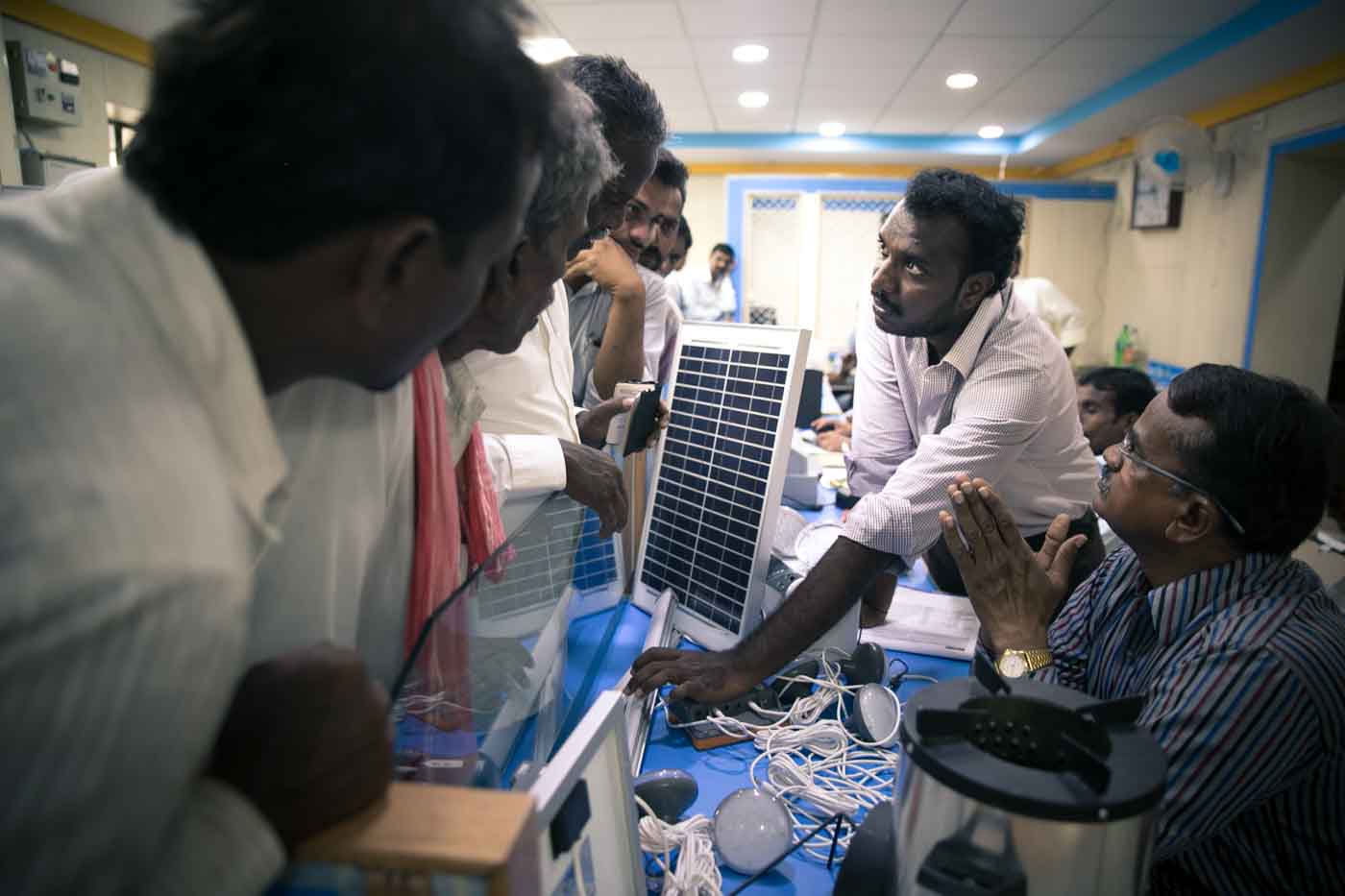Enabling women in at-risk communities to make the transition to clean energy
The project enables women microentrepreneurs in rural areas of India to access funding for solar lamps and water filters and helps to build supply chains in remote regions. The women use these products for both their businesses (e.g. solar lamps to extend the opening hours of a small shop) and their homes (e.g. providing clean drinking water for family members). The money saved on fuel enables the women to repay the loans. Organised in self-help groups, the women meet regularly to support each other, monitor satisfaction, and encourage the use of clean energy products. Each group has a clean energy leader who manages after-sales support in case the products need servicing or repair. Some women work as clean energy demonstrators, travelling to nearby villages to educate others about the benefits of the new products. In this way, they enable more women to take the first step on their clean energy journey.

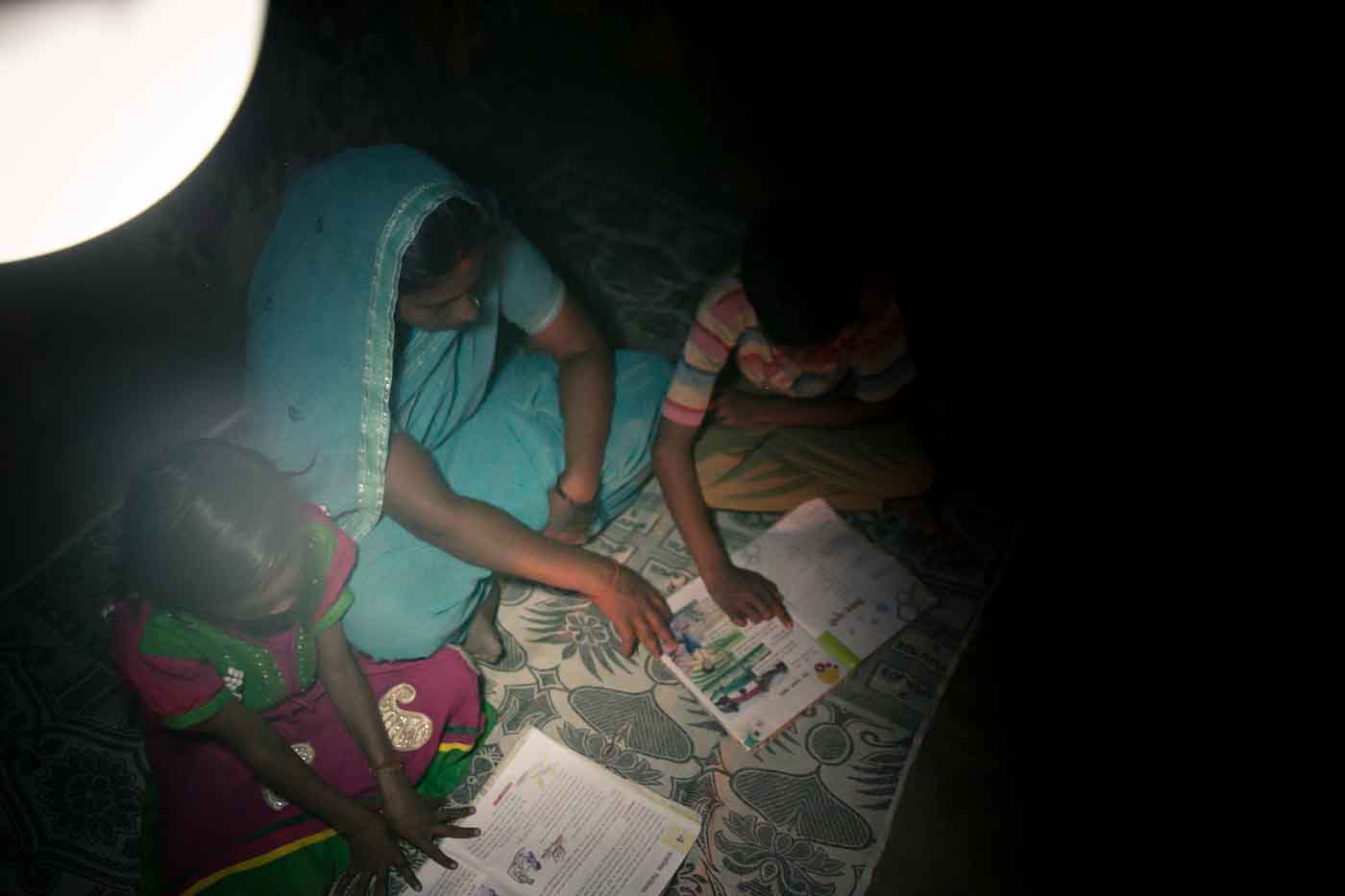
Lighting kerosene lamps and boiling water over an open fire to make it safe to drink are still common practices in rural India. But both practices are environmentally damaging and can lead to fire, injury, and respiratory diseases. Many energy-efficient products are often expensive or difficult to access in remote areas, making projects like this one especially necessary.
Solar lamps replace kerosene lamps by using sunlight to generate their electricity. Water filtration systems use filters to mechanically clean contaminated water, eliminating the need to boil water. The use of both products significantly reduces carbon emissions and can alleviate pressure on local forests as less firewood is needed. For local people, the benefits go beyond carbon reduction: better indoor air quality prevents respiratory diseases and families can save time and money with the reduced need for fuel or firewood. Solar lamp and water filter projects in the ClimatePartner portfolio are registered with these international standards.
Explore our projects
Biochar for Climate Action, Healthy Soils, and Better Harvests

A certified climate project combined with additional commitment

Expansion of renewable energy generation in Asia
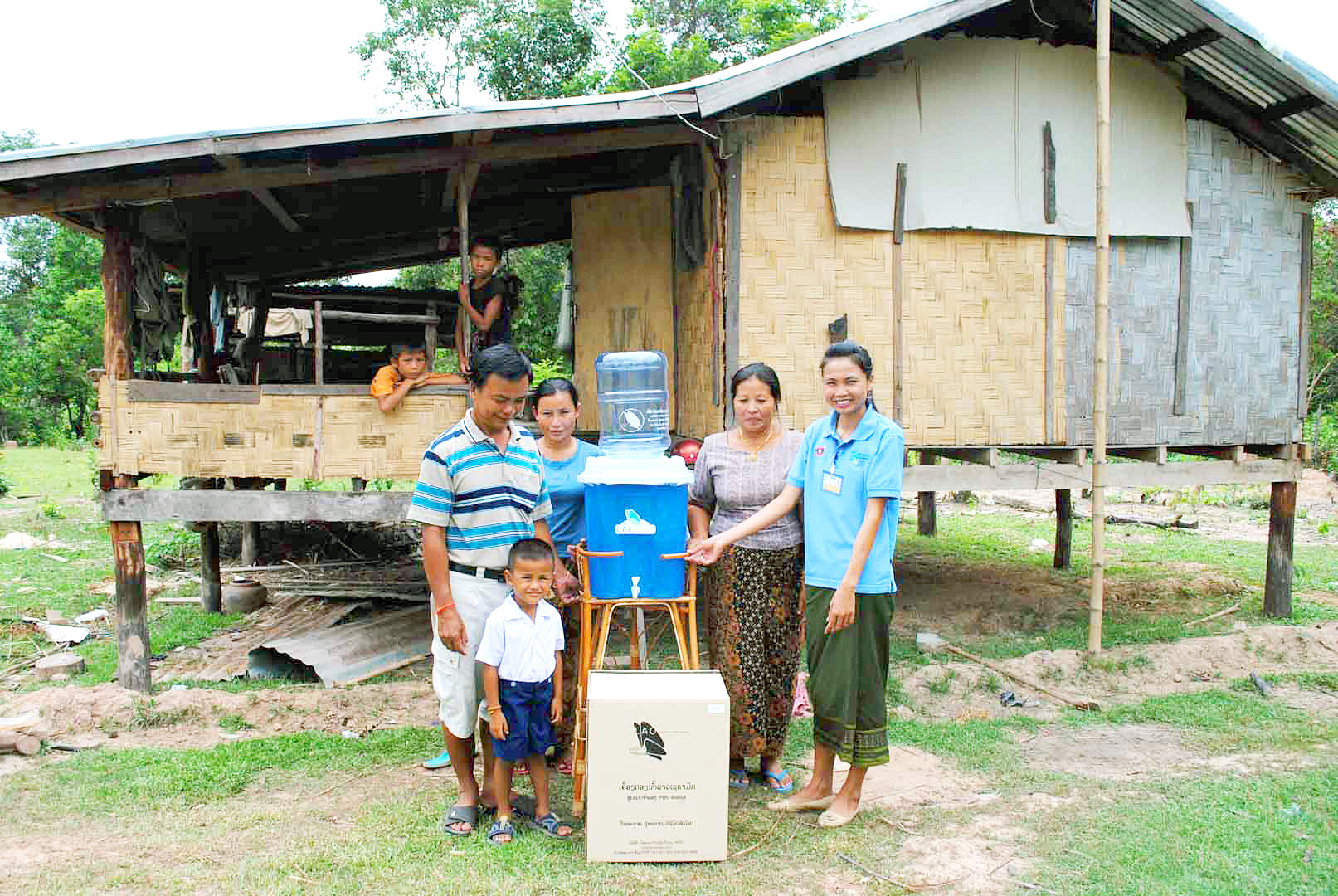
Ceramic water filters save CO2 and improve health
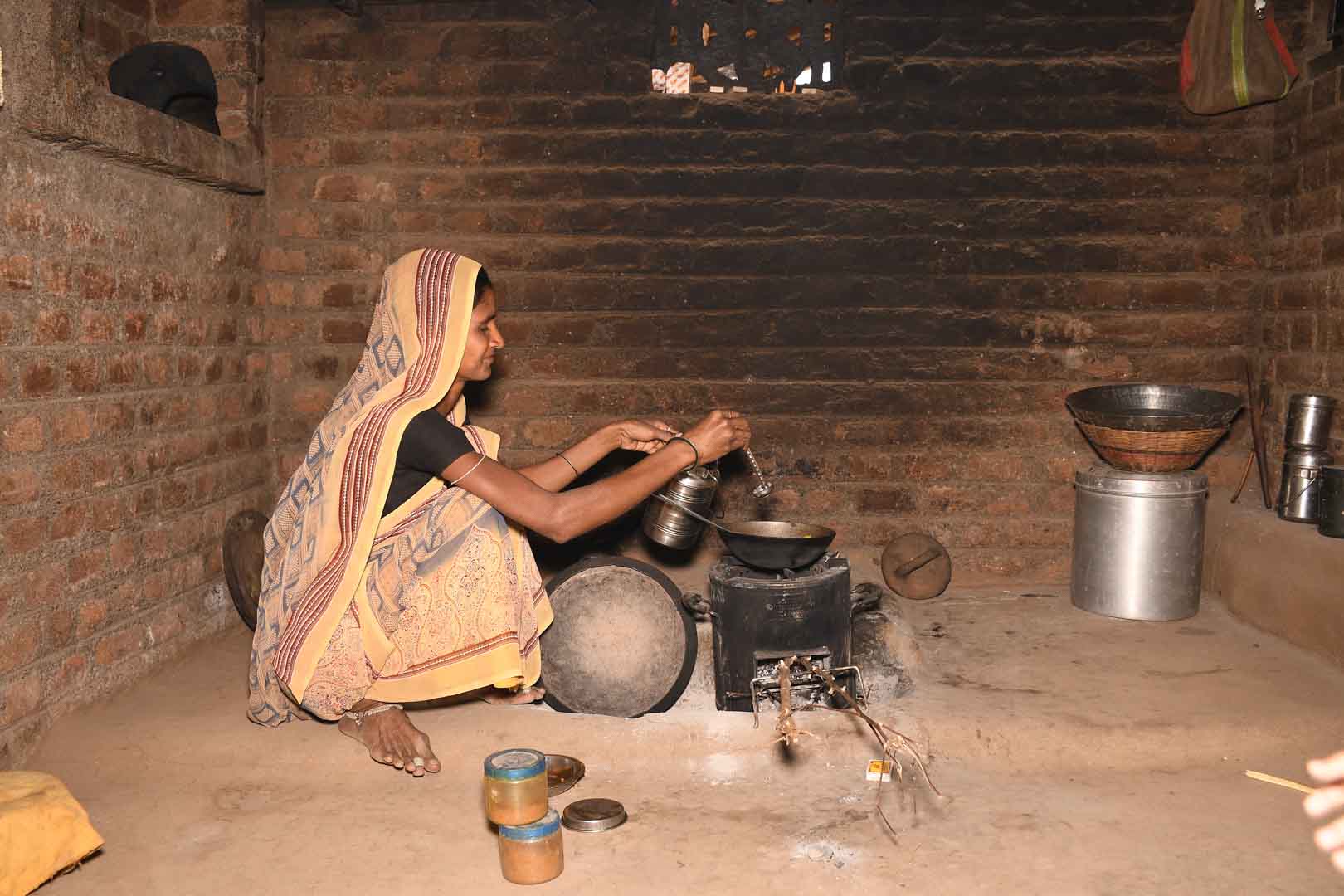
Improved cookstoves worldwide – for better health and cleaner air

A certified climate project combined with additional commitment
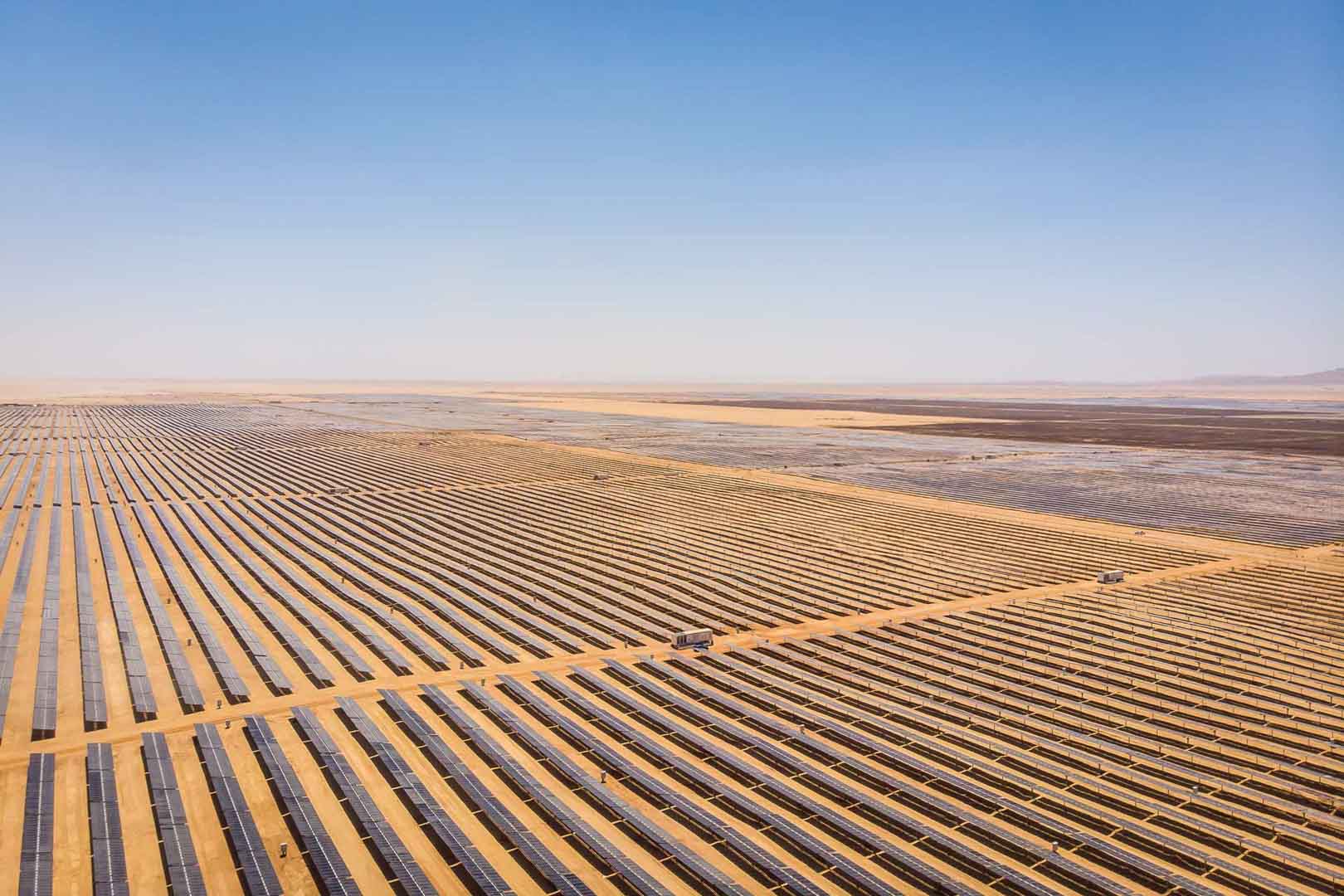
Powering access to renewable energy in Africa
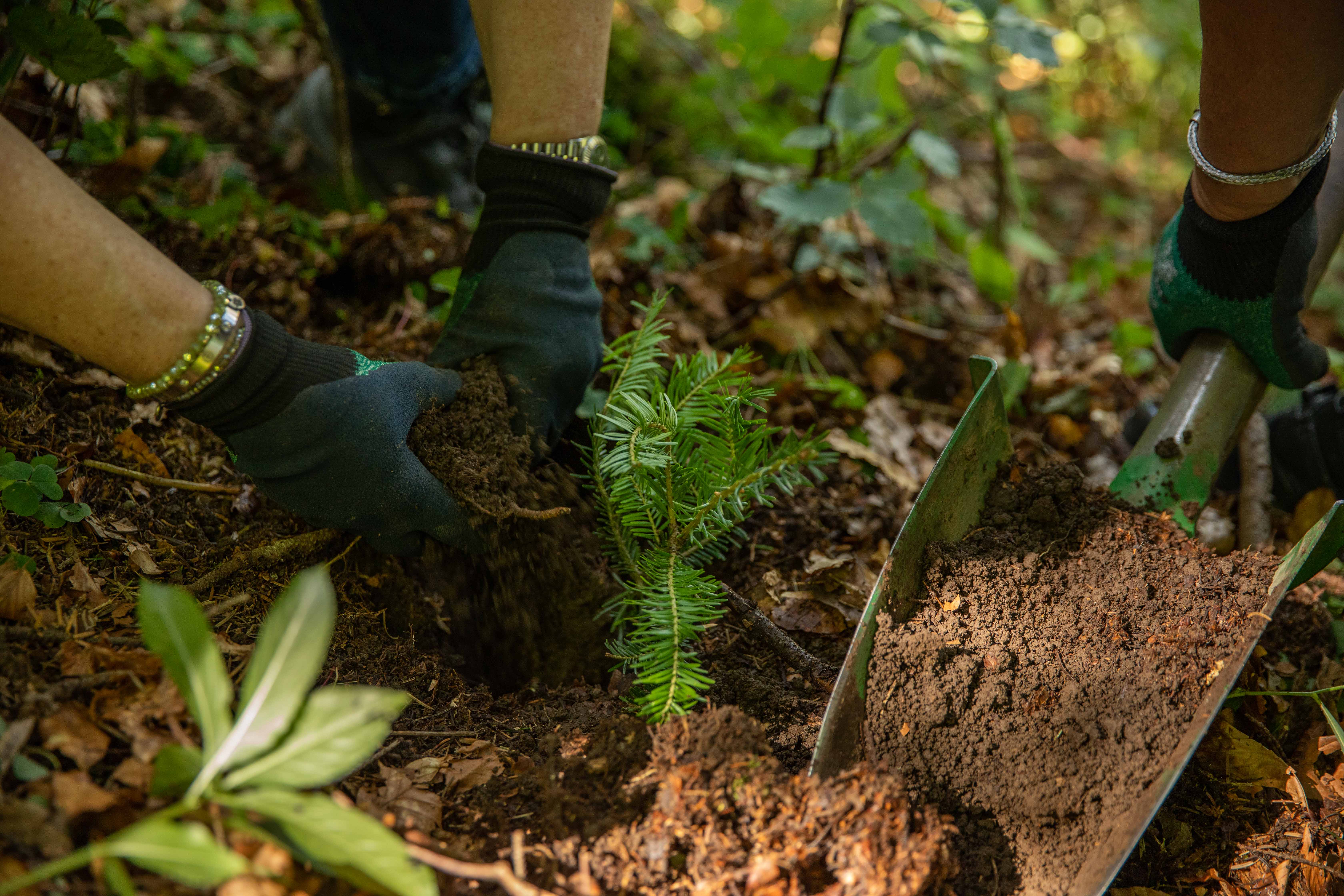
A certified climate project combined with additional commitment
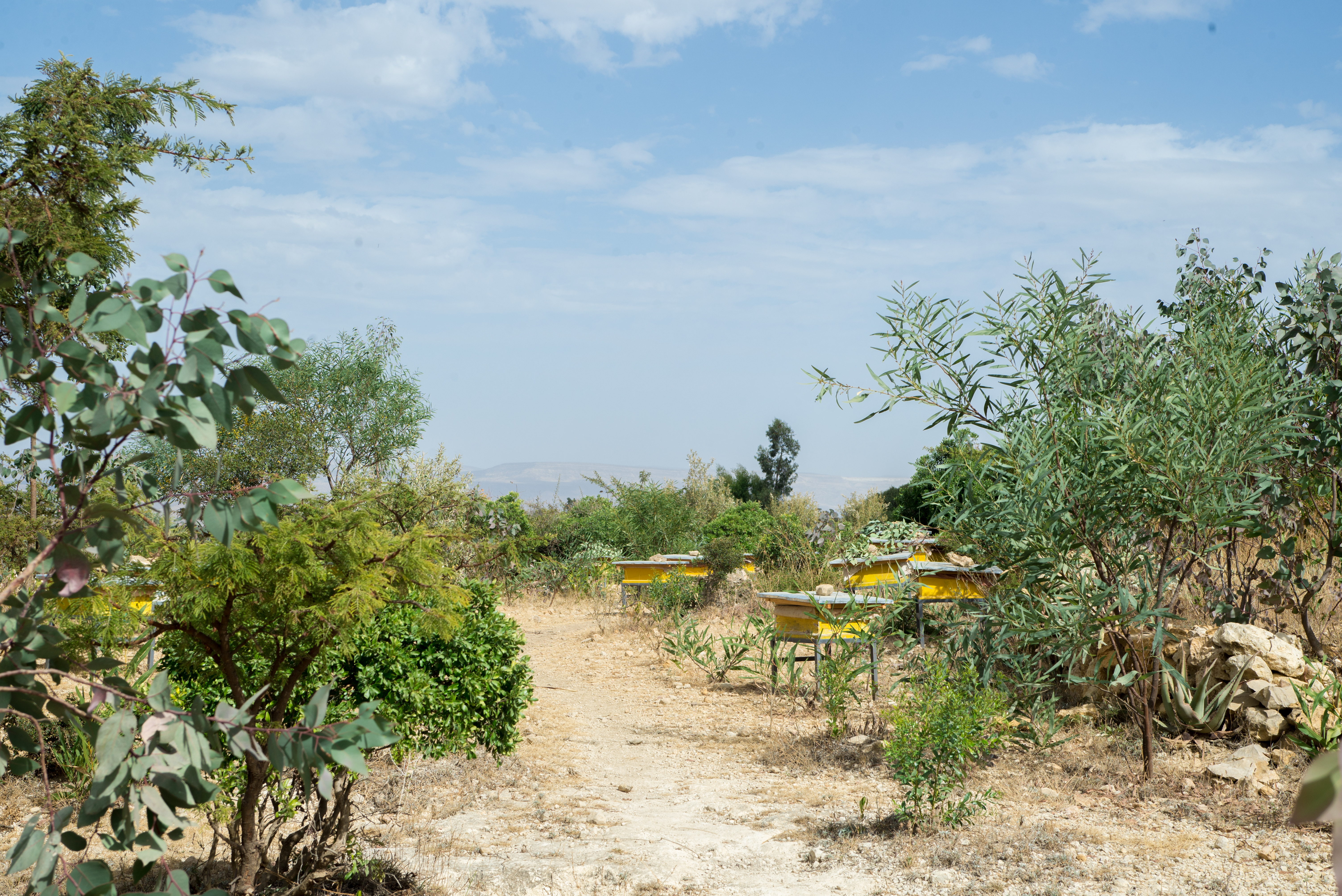
Restored ecosystems remove carbon
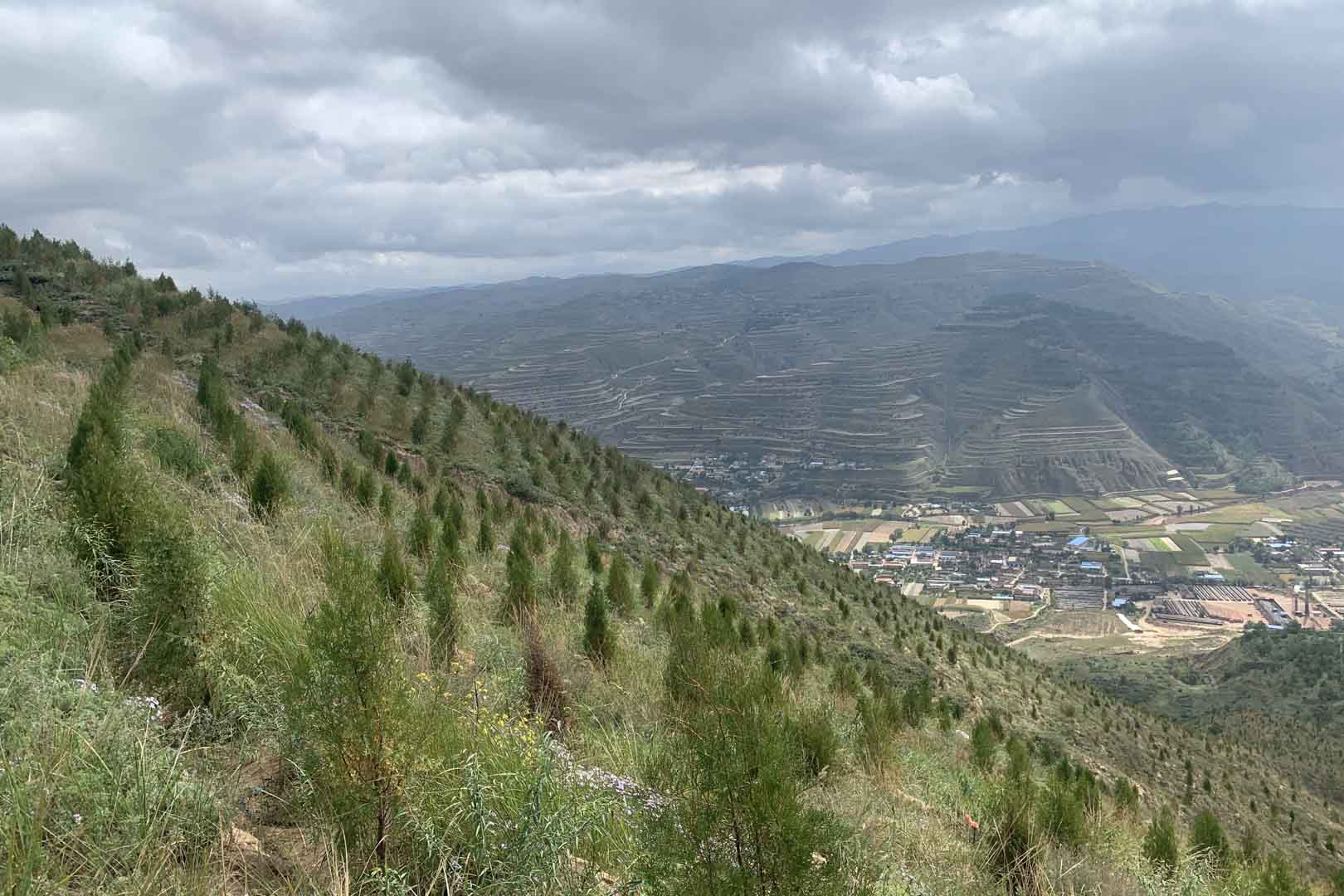
Turning degraded farmlands into healthy ecosystems
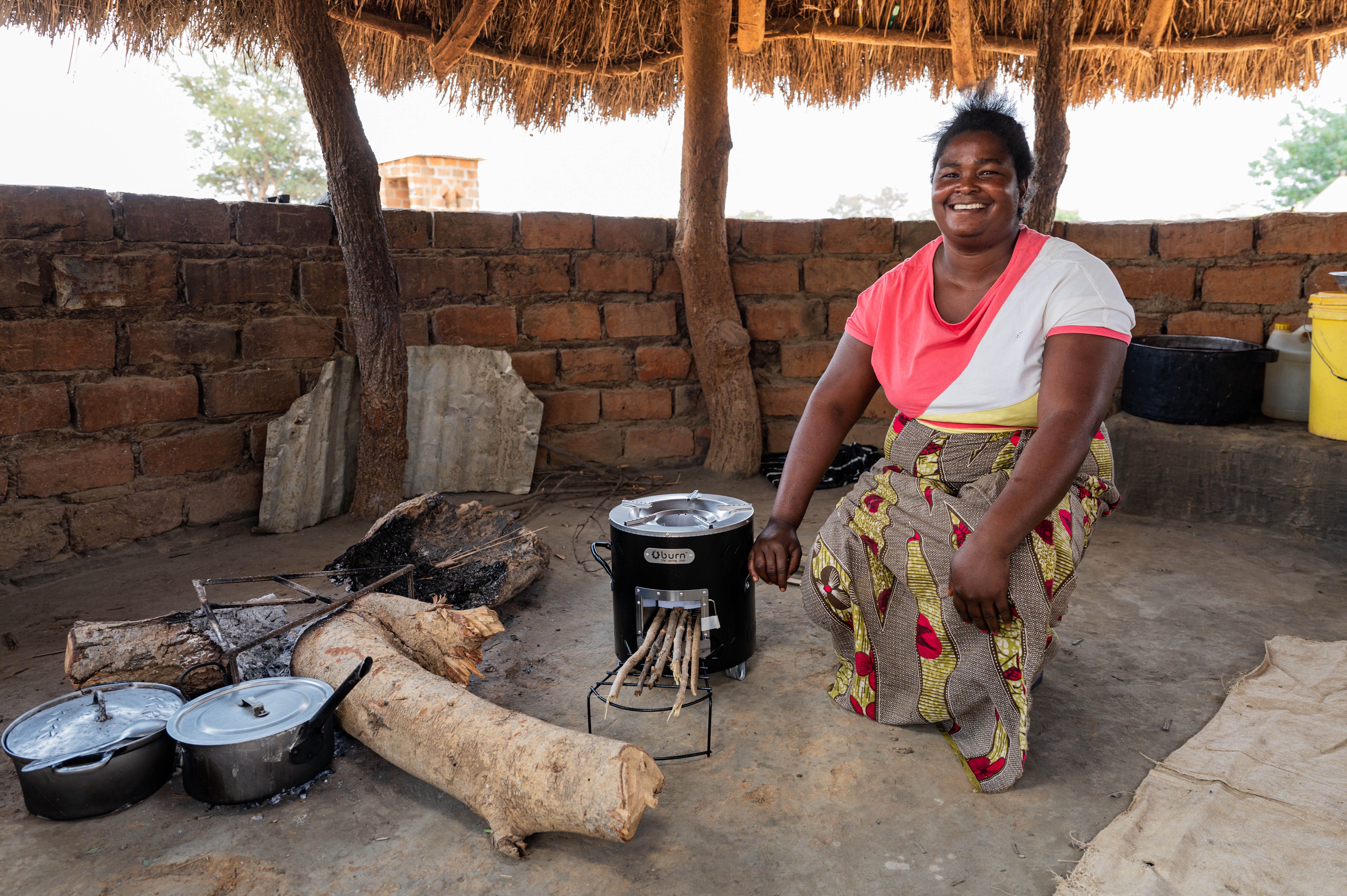
Improved cookstoves - better for health and the environment
